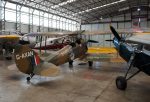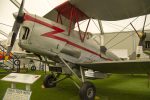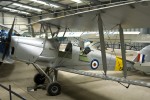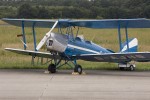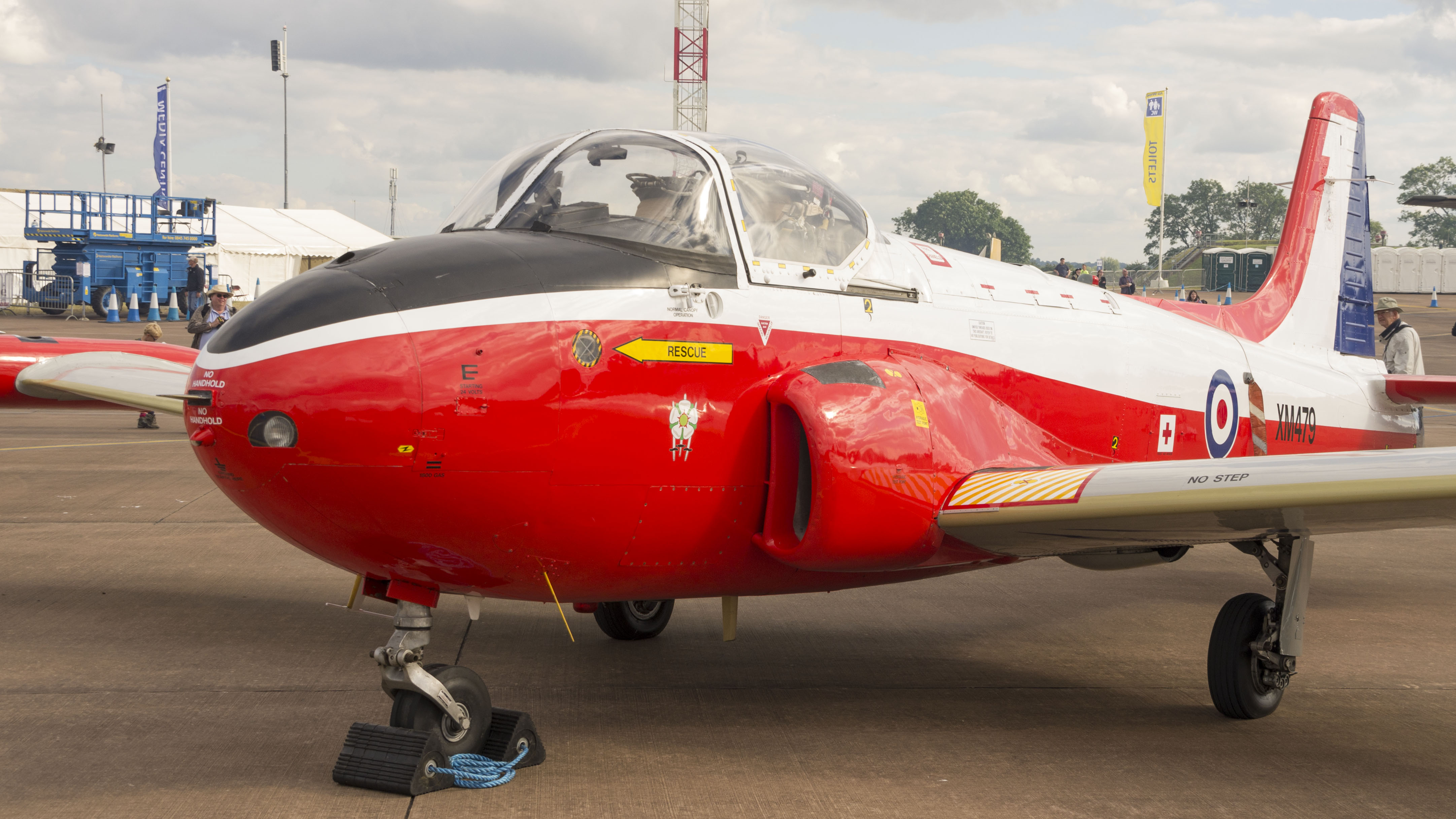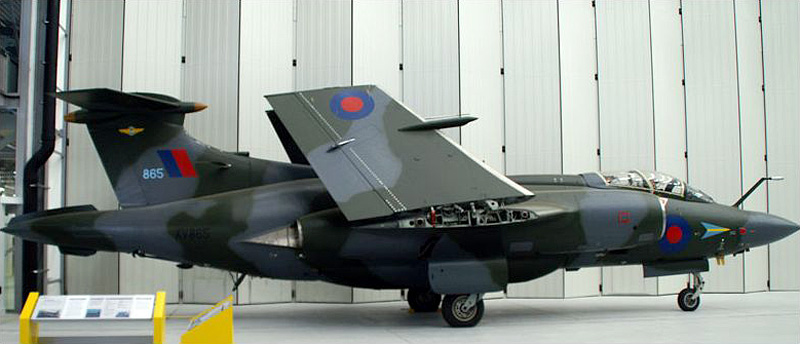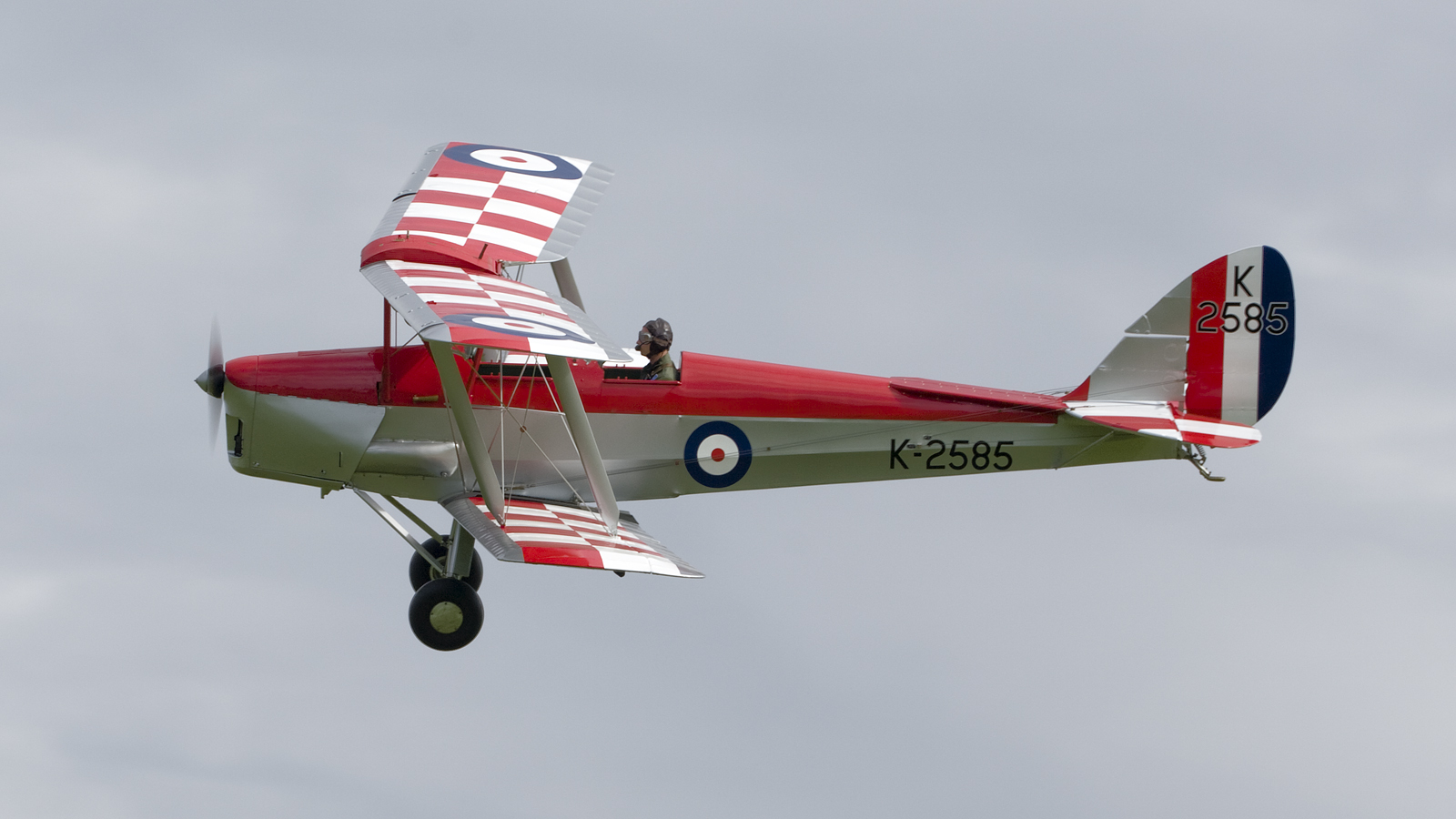
The de Havilland DH.82 Tiger Moth is a 1930s British biplane designed by Geoffrey de Havilland and built by the de Havilland Aircraft Company. It was operated by the Royal Air Force (RAF) and many other operators as a primary trainer aircraft.
| Role | Trainer |
|---|---|
| Manufacturer | de Havilland Aircraft Company de Havilland Canada |
| Designer | Geoffrey de Havilland |
| First flight | 26 October 1931 |
| Introduction | February 1932 |
| Retired | 1959 |
| Status | Retired from military service, still in civil use |
| Primary users | Royal Air Force Royal Canadian Air Force Royal Australian Air Force Royal New Zealand Air Force |
| Produced | 1931–1944 |
| Number built | 8,868 |
| Developed from | de Havilland DH.60 Moth |
| Variants | Thruxton Jackaroo |
DH.82 Queen Bee
Unmanned radio-controlled target drone that used Tiger Moth wings and for the economy, a wooden fuselage based on that of the DH.60 Moth (but with the structural changes associated with the cabane struts having been relocated as per the standard Tiger Moth) was used. The Queen Bee was intended to be operated from either floats or wheels. As of 2008, the sole remaining airworthy Queen Bee resided at RAF Henlow, England. 405 were built.


Specifications (DH 82A)
General characteristics
- Crew: 2
- Length: 23 ft 11 in (7.29 m)
- Wingspan: 29 ft 4 in (8.94 m)
- Height: 8 ft 9 in (2.67 m)
- Wing area: 239 sq ft (22.2 m2)
- Empty weight: 1,115 lb (506 kg)
- Gross weight: 1,825 lb (828 kg)
- Fuel capacity: 19 imp gal (23 US gal; 86 l)
- Powerplant: 1 × de Havilland Gipsy Major I 4-cylinder air-cooled inverted in-line piston engine, 130 hp (97 kW)
- Propellers: 2-bladed fixed-pitch propeller
Performance
- Maximum speed: 109 mph (175 km/h, 95 kn)
- Cruise speed: 67 mph (108 km/h, 58 kn)
- Range: 302 mi (486 km, 262 nmi)
- Service ceiling: 13,600 ft (4,100 m)
- Rate of climb: 673 ft/min (3.42 m/s)
Armament
up to 8× 20 lb (9.1 kg) bombs
Photos Rob Vogelaar and Marcel van Leeuwen


